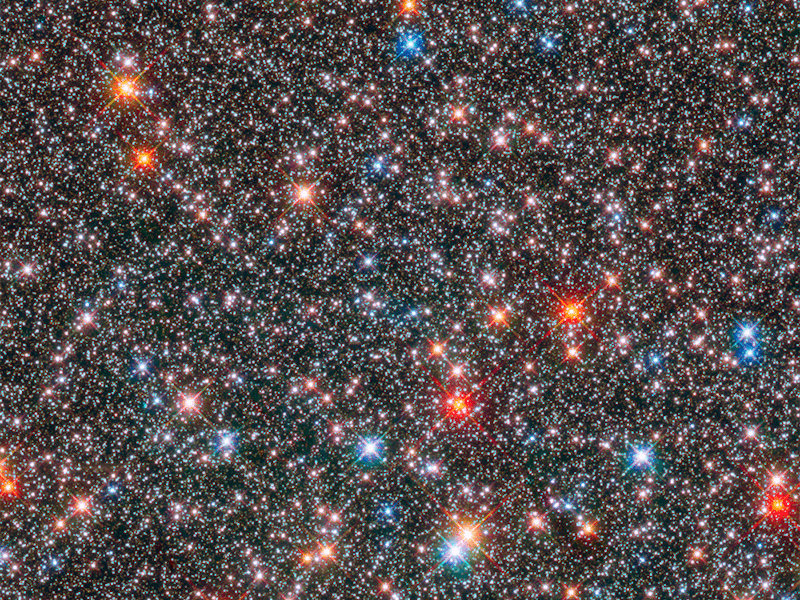New Hubble Image of Star "Swarms" Could Hold Clues to Our Galaxy's Past
Peer into the heart of the Milky Way.

The center of the Milky Way is made up of a tightly packed grouping of stars 26,000 light-years away from Earth, known as the “bulge.” This bustling swarm of stellar activity, pictured in the image below, was once thought to be completely made up of ancient stars — until now.
A team of astronomers was able to observe distinct differences in how fast the stars in the bulge are zipping around our galactic center, using data from NASA’s Hubble Space Telescope. In a paper they presented at a January 11 meeting of the American Astronomical Society in Washington D.C., they stated that their findings suggest many of the stars in this area are relatively young. This provided new insights on the evolution of our galaxy.
Join our private Dope Space Pics group on Facebook for more strange wonder.
The central section of the Milky Way is like Grand Central Station in New York City on a busy day — but less of a disaster. Thousands of stars swirling near each other, some of which can be a single light year apart — pretty close by for space standards. But this new analysis of about 10,000 Sun-like stars in the bulge reveal that not all of these astral travels were created equally.
This Hubble Space Telescope image of a sparkling jewel box full of stars captures the heart of our Milky Way galaxy.
The lead author of the paper, Will Clarkson of the University of Michigan-Dearborn, says that the speed at which a star is moving depends on its chemical composition. This means that the Milky Way’s bulge is made up of a diverse group of celestial bodies.
“By analyzing nine years’ worth of data in the archive and improving our analysis techniques, we have made a clear, robust detection of the differences in the motion for chemically deficient and chemically enriched Sun-like stars,” said Clarkson in a statment. “We hope to continue our analysis, which will allow us to make a three-dimensional chart of the rich chemical and dynamical complexity of the populations in the bulge.”
This throws a wrench in the theory that all the stars in the bulge should be of similar age. If that were true, they would all be moving at roughly the same speeds.
This recent research identified that newer stars rich in heavy elements, like iron, are orbiting the center of the galaxy at twice the speed of their older counterparts. This diverse set of stars suggests that the bulge was not created all at once, but actually a result of the Milky Way cannibalizing smaller galaxies.
This new understanding our galaxy’s archeology provides crucial information for NASA’s James Webb Space Telescope, which is scheduled for launch in 2019. This spacecraft was designed to explore groups stars inside of the bulge and could lead to even more discovers regarding the center of your galaxy.
One clue at a time, scientists are uncovering the millions of secrets the Milky Way holds.